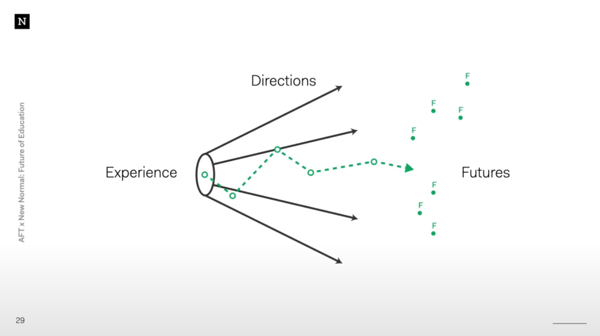
The Best UX Advice from UX Tartu 2020
UX Tartu 2020 took place for the fourth time on 25–29 May 2020, bringing together over 1000 participants from 48 countries with a focus on raising money for the Estonian Blind Association. Organized by sTARTUp Day and Velvet, the central theme of this year was designed for the real needs of real people, with five UX professionals sharing their expertise in their respective fields.
The speakers at UX Tartu 2020 were:
Ϟ Bilgi Karan, UX Design Lead at Inter IKEA Group
Ϟ Jordan Valdma, CEO of Producement
Ϟ Sami Niemelä, Co-founder and Designer at Nordkapp
Ϟ Jakob Rosin, Technical Evangelist at Voxmate
Ϟ Jamshid Alamuti, Co-founder of Pi School
Here are the top lessons learned from each of the experts:
All design lives in the future – all that matters is how far
Find more in-depth information about building futures from Sami Niemelä here.
Every future is someone else’s present and every present is someone else’s past. People tend to prioritize current issues, however, the future is inevitable – it comes one way or another. There will be new materials and new technologies that designers have to “humanize” for consumers and to do so, they design probes that simulate the future to test out how people react to possible outcomes.
There are three types of futures – probable plausible futures, wildcards like the COVID-19 pandemic and black swans that are completely left-field unanticipated. These futures are always in a state of disorder because they’re natural, but using the tools of foresight and future studies, we can spot opportunities that can be turned into protopias of the future we want to arrive in.
Ask yourself “Yeah, but why”
Listen to how IKEA addresses the needs of consumers from Bilgi Karan here.
Design is such a large collection of activities and professions that it’s hard to keep track of the titles. Don Norman coined the word UX when he envisioned that people’s experiences with objects and interfaces can be designed – a branch of design that deals with emotions and impressions.
The only way to reach beyond the “geeks” in smart homes is to thoroughly understand the real needs of people and the synergy between the different people in a household as well as between different products.
It’s easy to strap a chip onto an existing piece of technology and call it a day, but ask yourself “why?”
The state of the smart home today resembles the state of personal computers at the end of the 70s or beginning of the 80s. You have to piece together your smart home yourself, there’s no common standard. Things are moving, but not that fast. IoT can be very hard to move sometimes because it has many parts that are quite blocky – front end, backend, firmware, integrations, cloud. Reaching full customer satisfaction can be really hard because of this reason. This means that any designer in this field has to have a good understanding of connectivity, connectivity standards and new technologies before even beginning to design something.
Use fear as a power to unleash your full potential
Find out how to use fear to your advantage from Jamshid Alamuti here.
The first thing most people felt when they first fully realized the corona crisis was fear. Instinct and the fear of the unknown just kicked in, encapsulating people in selfishness and panic alongside the urge to save your own skin. This situation is a proof of concept that our planet wasn’t ready for the environmental crisis. When it comes to the fear of the unknown, embrace it, visualize it. It’s only unknown because you don’t know what the real consequences are.
Use fear as the power to unleash your full potential. A parallel can be drawn between fear and courage – have the courage to take a jump and fear will be gone. This crisis was the CIO [Chief Innovation Officer] many people were waiting for as it forced businesses to innovate.
Is your product accessible?
Jakob Rosin shared his experience as a blind person here.
How would someone who is blind use a touchscreen or a smart device at all? That was a huge problem about 12 years ago when more smart devices were coming to the market and buttons were going away. There weren’t many built-in solutions available, just some third-party options.
At the time, the iPhone 3GS was completely revolutionary because it was the first device to contain a build-in voice over. The problem is that it’s a UI overlay, meaning it reads what’s under the finger. Most people use keyboard shortcuts to interact with devices because it’s easier than going through the whole screen and all the menu filters trying to figure out what they’re looking for. It’s not impossible, it just takes longer than necessary.
Scaling Your Product
Jordan Valdma gave practical advice about scaling here.
Startups who pivot once or twice raise 2.5x more money, have 3.6x better user growth and are 52% less likely to scale prematurely.
Don’t be afraid to “kill your babies”, it’s part of the job. Take the time to go through all the product iterations and validate the market. As a UX designer, you can do this through prototyping, user testing, conversion funnels, virality and measuring retention.
_
UX Tartu 2020 was part of sTARTUp Talks, the official side events series of sTARTUp Day. Find information about upcoming events at www.startuptalks.ee and on the sTARTUp Talks Facebook.
